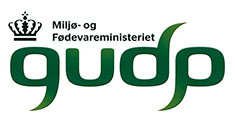WASHO3, Work Package 5.1
This project investigates the stability of ozone dissolved in water, under conditions relevant for the use of ozone for washing fruits and vegetables. The greater objective of the WASHO3 project is to produce an ozone-based solution for the fruits and vegetables food industry, that is capable of extending the shelf life of their products. It is the role of the University of Copenhagen in the WASHO3 project to establish the knowledge of ozone-degrading reactions and set up guidelines to achieve optimal ozone concentrations in water.
Microbial infection affects the shelf life and safety of organic fruits, vegetables and ready-to-eat products made of these. In addition, fungi may cause contamination with hazardous mycotoxins. Hence, microorganisms cause huge losses in the primary production of fruits and vegetables, and result in a tremendous and unsustainable food waste in the primary sector as well as at the retailers. Using ozonated water in the production may significantly enhance food safety and prolong the shelf life of the products to the benefit of the growers, the industry, the retail sector and the environment. It will decrease the amount of microorganisms at the surface of fruits and vegetables and may in addition degrade surface deposited toxins. However, the effect of ozonated water on the chemistry of fruits and vegetables is not clearly understood, just as the exact reaction mechanisms of ozone in washing water is poorly understood. In addition, use of ozonated water may cause formation of toxic byproducts and affect the ripening of the fruits and vegetables.
WASHO3 Work Package 5.1 (WP5.1) is a part of the larger WASHO3 project, and aims to describe the chemical stability of ozone in water, for the specific purposes defined by the industrial partners of the WASHO3 project. It is the task of Copenhagen University to establish a kinetic model predicting the decay of ozone in water under specified conditions, including pH, temperature, as well as the presence and concentration of compounds (dissolved organic matter) that can acts as ozone promoters or scavengers. The model should be valid for food commodities of interests for the industrial partners (carrot, celeriac, celery, onions, apples, pears, beetroot, lemons, oranges, and ginger). Ultimately, this chemical model will serve to establish a set of guidelines to prepare treatment water with an ozone concentration suitable to achieve optimal antimicrobial effects.
WASHO3 is a project realized in partnership with the company INFUSER, an air-purification company using ozone technologies, and Metropolitan University College. Industrial partners include Frankly Juice, Hunsballe Grønt and Gammel Estrup Gartneri.
Sorivan Chhem Kieth
Postdoc
Ingredient and Dairy Technology
Infuser ApS
Funded by:
 Project: WASHO3, Work Package 5.1
Project: WASHO3, Work Package 5.1
Period: 1st of July 2018 - 30th of June 2021
Funding agency: Green Development and Demonstration Programme (GUDP)
Grant size: DKK 1,901,811
Contact
 Mogens Larsen Andersen
Mogens Larsen Andersen
Professor
Ingredient and Dairy Technology
